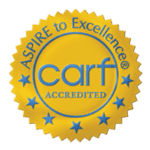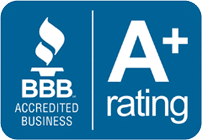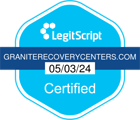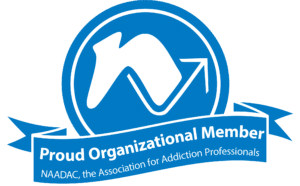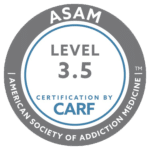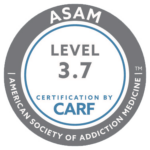Merrimack Addiction Treatment Resources
The decision to take a new course in life is challenging even under the best of conditions. Contemplating getting help for substance use disorder or addiction is something that necessitates overturning and revamping your entire way of living. It may feel truly overwhelming to think about entering into alcohol or drug rehab. Armed with information about addiction, treatment and recovery can make seeking help a more manageable process.
Understanding that you or a loved one is far from being alone when it comes to seeking and obtaining addiction treatment is important.
Merrimack had 41 overdose deaths in 2019, while Hillsborough County, the county which includes the town of Merrimack, had 126. Over 1,884 people were admitted to ERs in Hillsborough county for opioid overdoses alone.
The state of New Hampshire, including Merrimack, is considered part of “ground zero” in the national opioid epidemic. New Hampshire has been reported to be one of the top five states in the country for fatal opioid overdoses according to the National Institute on Drug Abuse. Fatal opioid overdoses are by far the most common cause of drug-related deaths in New Hampshire. The numbers have started to decline a bit because of prevention efforts and the rising popularity of methamphetamines.
How to Know When a Person Needs Help With Alcohol or Drug Addiction
There are some instances in which an individual may suffer from substance use disorder without really showing any symptoms. As a person’s substance use becomes more profound, however, signs of addiction usually become apparent.
A commonplace sign of addiction is demonstrated by a person cutting off or withdrawing from existing social contacts. This includes family, friends and even professional or work colleagues. This tends to occur for two primary reasons. First, a person laboring under an addiction typically desperately tries to conceal substance use from others in his or her life. Second, as an addiction becomes more severe, a person with this level of substance use disorder focuses nearly all attention on using and finding the mind-altering substance of choice. His or her peer group becomes that of fellow users and drug suppliers.
Financial chaos is another sign of drug addiction. As time progresses and the use of a mind-altering substance intensifies, any money available is directed toward obtaining the drug of choice. Bills go unpaid, including crucial ones like rent or a mortgage. A person addicted to a mind-altering substance typically will have issues maintaining gainful employment. Such an individual is likely to end up not only unemployed but unemployable.
Ultimately, legal problems may rear their head for an individual laboring under a substance addiction. DUIs are likely for an individual addicted to alcohol. Other types of criminal charges also are relatively common, including those for drug possession and even drug distribution. A notable percentage of individuals with an addiction turn to selling drugs to underwrite their own use of mind-altering substances.
Other signs that a person may be in need of professional help for a drug or alcohol addiction include a deterioration in personal hygiene, a poor diet and erratic sleep patterns.
In nearly all cases, a person with a substance use disorder or addiction will exhibit multiple signs or symptoms. The number and intensity of these symptoms sometimes develop over a more extended period of time. Sometimes, the signs and symptoms of addiction present and then accelerate at a particularly fast pace.
Basic Facts on Types of Addiction Treatment Available in New Hampshire
A number of different types of addiction treatment are available to residents of the Granite State. Two primary categories of substance use disorder and addiction treatment programs are residential and nonresidential rehab options.
A residential rehab program, like the that available in New Hampshire at New Freedom Academy and Green Mountain Treatment Center, is typically designed for people with a severe substance use disorder or addiction. A residential program permits a person the time to be removed from the pressures of day-to-day life and take a sharp focus on the use of mind-altering substances and the root causes of an individual’s addiction.
In nonresidential treatment at a recovery center, a person is able to continue basic day-to-day activities, usually including work, while residing at home. A nonresidential problem often involves treatment programming for two to four days a week.
Many addiction rehab programs, residential and nonresidential alike, utilize a 12-step curriculum. New Freedom Academy and Green Mountain Treatment Center are two prime examples of residential programs that use a 12-step curriculum in New Hampshire. Some addiction treatment programs use what is known a “rational recovery” approach.
Highly Personalized Addiction Treatment at New Freedom Academy
A comfortable, intimate 20-bed center nestled in the beautiful countryside of Canterbury, New Hampshire, New Freedom Academy is suited ideally to a person seeking help with an addiction who prefers closer connections. The resident-to-clinician ratio at New Freedom Academy is extremely low to ensure individualized help around the clock.
New Freedom Academy purposefully integrates clinical psychotherapeutic support and services with holistic therapies. The clinicians at the center understand that a true course of new freedom from addiction necessitates more than just establishing sobriety. A process rather than a destination, recovery demands treatment of the entire person and whole-body wellness.
Clinical psychotherapeutic support includes one-on-one therapy together with targeted process groups designed to focus on specific client needs, goals and objectives. Examples of holistic therapies include yoga, meditation and physical exercise.
New Freedom Academy has customized courses of treatment for individuals with substance use disorders and co-occurring mental health conditions, also known as a dual diagnosis. The stark reality is that a considerable percentage of people laboring under an alcohol or drug addiction also suffers from a simultaneous mental health condition like depression, anxiety or PTSD.
New Freedom Academy also utilizes different therapeutic opportunities that involve a resident’s family. A reality of addiction is that substance abuse disorder impacts a person’s family. When the family gets involved in treatment, it impacts not only a person’s substance use disorder but the prospect for successful recovery going forward into the future.
The clinical staff at New Freedom Academy works in partnership with a resident to formulate a comprehensive and individualized course of treatment. This includes not only a primary residential treatment plan but also relapse prevention and aftercare strategies.
Comprehensive Addiction Treatment at Green Mountain Treatment Center
Green Mountain Treatment Center is described as “serene, secluded and panoramic.” Located in shadows of the White Mountains in Effingham, New Hampshire, Green Mountain Treatment Center is an idyllic type of refuge at which a person laboring under an addiction can access individualized, comprehensive treatment and recovery help.
Green Mountain is an adult-oriented and gender-separated comprehensive addiction rehab center. With a treatment program based on 12-step principles and concepts, Green Mountain utilizes a variety of clinical and holistic modalities.
A comprehensive treatment plan is developed with clinical staff working closely with a resident. A treatment plan is designed to ensure that the needs of a specific resident are fully addressed.
Evidence-based therapeutic modalities include one-on-one therapy, group process or group therapy, and treatment for dual diagnosis or co-occurring mental disorders. Holistic therapies, integrated with evidence-based therapy, include meditation, yoga, and gym and fitness work. In addition, Green Mountain Treatment Center ensures that residents obtain satisfying and nutritious meals prepared by a chef.
The unique needs and goals of an individual resident are also paramount at Green Mountain. An individualized, comprehensive treatment plan is developed for every resident.
A considerable number of people with substance use disorder and addiction must undergo detox at the start of a treatment and recovery process. Green Mountain Treatment Center has a medical detox facility for clients. The detox facility offers 24-hour medically supervised detox in a highly structured, safe environment. The Green Mountain detox facility is staffed by caring, licensed medical professionals who are specifically trained in addiction medicine and treatment.
The treatment process at Green Mountain is designed to be a seamless undertaking. In other words, a client at Green Mountain smoothly moves from initial detox to primary residential treatment and then into aftercare.
Residential Treatment and Beyond
Recovery is a process. On some level, it begins when a person makes the decision to enter into a residential alcohol or drug treatment center. The recovery process continues after primary residential treatment concludes.
Through the creation of a relapse prevention plan and an aftercare strategy, a person who completes residential treatment continues to access therapeutic and other supportive opportunities. These may include individual therapy, group process therapy and participation in a support program like Alcoholics Anonymous or Narcotic Anonymous.
In many ways, Mahatma Gandhi succinctly expressed a sentiment that is wholly applicable to a person on a journey of recovery and new life: “As human beings, our greatness lies not so much in being able to remake the world as in being able to remake ourselves.”
If you or a loved one in Merrimack needs help overcoming addiction, reach out to us today.


